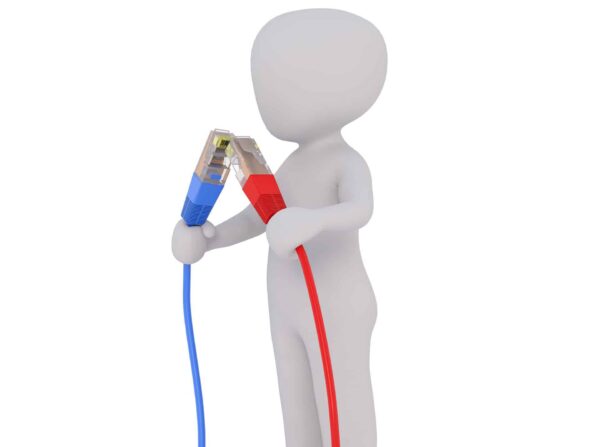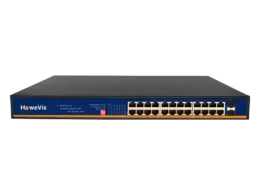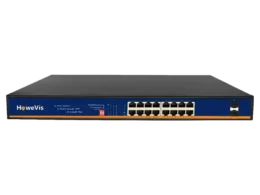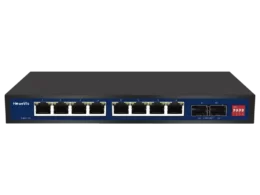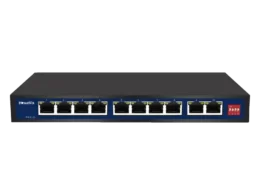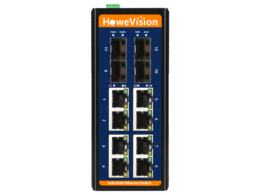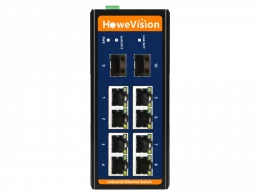Gigabit Ethernet technology also works on the Ethernet framework. But it is immensely faster than conventional Fast Ethernet.
The maximum speed that you can access through traditional Fast Ethernet is just about 100Mbps. On the other hand, with Gigabit Ethernet, you can touch a speed ballpark of 1000Mbps. A rate that is straightway ten times faster.
The fascinating fact about Gigabit Ethernet is that it makes use of the same infrastructure as Fast Ethernet.
Let’s understand the technology first. Then we’ll move to how you can take advantage of this great setup, and that too with existing infrastructure.
What Is Gigabit Ethernet?
Anyone who uses Ethernet will be aware of the traditional Ethernet technology using copper wires to connect devices. It functions very efficiently in both local area networks as well as in wide area networks.
Initially, when the technology came onto the scene, it took much time to replace the Token-Ring networking setup of IBM. The primary reason behind the quick acceptance of this technology was its cost. It offered an easy and cost-effective alternative to Token-ring technology.
The Gigabit Ethernet is the extension of the same fast Ethernet technology, which offers data transmission at a billion bits per second.
Today, many enterprises and organizations use Gigabit ethernet as the backbone of their network setups. Backbone means an extensive support transmission line that carries data to smaller connecting lines.
In smaller networks, a backbone line connects LAN to WAN. Likewise, in large enterprise-level networks, a backbone line connects local networks to switching exchanges.
Advantages of Gigabit Ethernet
As mentioned, Gigabit Ethernet works on both LANs and WANs. It uses internet protocol to communicate with multiple devices connected to the network.
The technology uses twisted encased and fiber cables to transmit data over the web.
Value and Dependability
The technology has varied uses, and it offers value to diverse users. The USP of the Gigabit Ethernet technology has been the stability it provides.
Unlike wireless network setups, the stoppages and technical disturbances are very minimal with Ethernet.
Robust Architecture
The TCP/IP architecture of Gigabit Ethernet networks enables them to offer seamless communication across devices.
It checks the network medium before transferring data, the technology that assists this is collision detection(CD). This structure allows Gigabit Ethernet to offer similar functions to all nodes, unlike client-server networks.
Data Protection and Security
Wireless networks are always prone to security breaches. Your data is never safe if you are using unmanaged WIFI. But with Gigabit Ethernet, you can get the best of both or one sphere, depending on your choice.
How? Let’s understand! If you are using Gigabit Ethernet crudely, meaning without any managed intervention, your data is most safe with this setup.
At the same time, if you want the convenience of wireless and impregnable security, you can operate Gigabit Ethernet with managed PoE switches.
Performance and Efficiency
Gigabit Ethernet networking is not a new technology. It’s been in the sphere for quite some time now. People who operate in the networking domain are aware of that. But the most remarkable thing about this technology is that it only got better with time.
Now you have Cat5e/Cat6a cables that consume very minimal Power, on par with wireless.
So the modern Gigabit Ethernet also solves efficiency woes, something that was one of the downsides of Gigabit Ethernet Networking infrastructure.
Do You Need a Special Cable for Gigabit Ethernet?
When you are deciding on an Ethernet cable, speed is the determining factor. If your network’s speed is less than or equal to 100MBPS, you are good to go with conventional Ethernet cables.
However, if you want to upgrade your Fast Ethernet network to Gigabit Ethernet, you need advanced cables. A compatible cable can make a substantial difference.
Also, if you want to make full use of your router, you need to supplement it with a suitable cable. The routers that we get today are more than capable of handling faster networks. All they need is a suitable cable to facilitate the services.
Upgrading – the term itself can, at times, be confusing. Indeed, you wouldn’t want to upgrade your cable with a similar version you are already using.
That is the potential mistake you have to avoid. When upgrading, always go with the newer and recent version of the cable.
As far as Gigabit Ethernet is concerned, you will be good if you choose anything above Cat5. The investment is justified because the technology is here to stay.
If you go with the recent version, you are investing in the future also. It’s a thumb rule of all infrastructural changes. If you change something, change it for the long term.
What Cables Should You Prefer for Gigabit Ethernet?
We have already discussed the importance of better cables. But probably the most critical question remains unanswered.
Newer. Better. Recent. But which one? Let’s try and understand the applicability of the two most suitable options for Gigabit Ethernet cables: Cat5e and Cat6a.
The term “Cat” here is nothing but the abbreviation of “category.” The numbers and letters after them denote the versions they support.
If you try to simplify it even further, you can say, the higher the number after “Cat,” the faster the cable. The reason behind it is their ability to facilitate higher frequencies.
Let’s look at both options separately and try to make sense of it.
Cat5e
The lowercase “e” here in Cat5e means “enhanced.” It looks similar to the category five(Cat5) cables. The factor that differentiates the two is the manufacturing process.
The testing standards for Cat5e cables are higher than category five cables. That means, if you choose Cat5e lines, you almost deny potential crosstalk to an unwarranted communication channel.
Upgrading a network setup with Cat5e is not a very expensive affair. It’s a very low-cost alternative and brings much more to the table than standard Cat5 cables.
Cat6a
If you consider compatibility with higher frequencies, the Cat6a cables easily outperform both Cat5 and Cat5e cables. The build quality of Cat6 lines is also much better than category five cables. They come with a braided shield.
The shielding is a game-changer component of Cat6 cables. Not only does it offer protection from crosstalk but also substantially reduces noise interferences.
With Cat6 cables, you can access the speed up to 10Gbps. But just like any other technology, additional features come with additional costs. The Cat6 Cables are costlier than category five cables.
Final Thoughts!
Now that we are living in the era of the fastest speed, we must adopt the recent 10 Gigabit Ethernet network. Most people still use Cat5e or Cat6 cables to support their networking needs. However, as long as you want to embrace the modern 10 Gigabit Ethernet, you must rely on Cat6a cable.
In this case, HomeVision technology will provide you with a one-stop solution to fulfill your requirements. We have the best industrial ethernet switches to support your needs.
Ever since its inception, the Gigabit Ethernet networking technology constantly found new applications. And it’s viable because it offers simple, low-cost solutions to the most complex network problems.
It remarkably adapted to the needs of Power over Ethernet-enabled devices. And it continues to show promise as more and more internet-enabled devices are coming to the scene.
Also, it’s worth mentioning that the advancements in PoE switches added value to Ethernet networks’ applicability. With managed switches, you can get master control over your network.
The bottom line is straightforward: if you are investing in this technology, you will continue to have ripe benefits in the future. The Ethernet cables are a building block of all modern networking infrastructures.
That’s why when you think of upgrading your existing infrastructure, you should think about long-term benefits. And build a forward-looking up-gradation plan.
